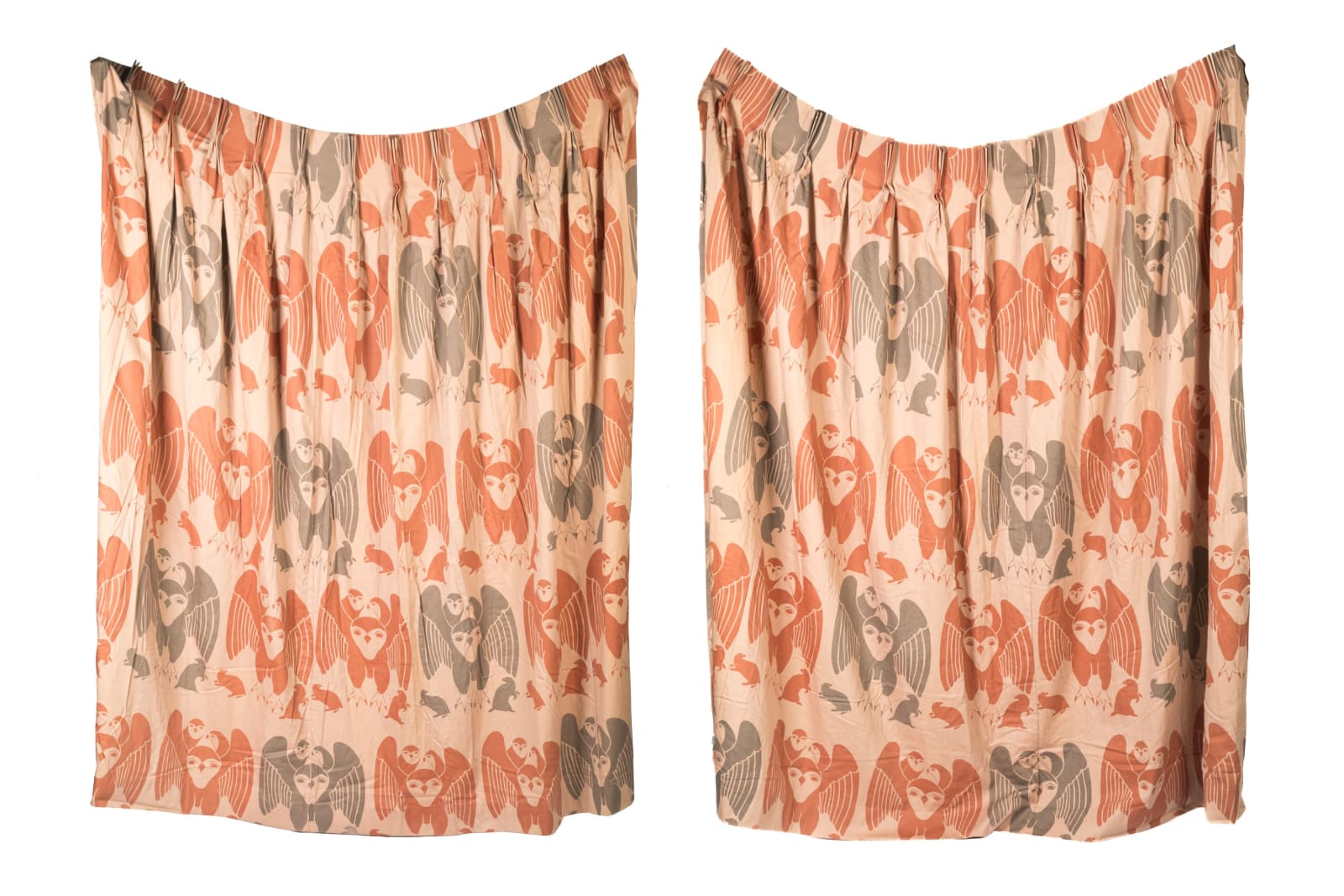-
Artworks
PAULOSIE SIVUAK (1930-1986) PUVIRNITUQ (POVUNGNITUK)
Owl Family with Lemmings (Set of Curtains), 1976Printmaker Unknown
screenprint on cotton fabric, fashioned into curtain, 57 x 76.75 in (144.8 x 194.9 cm)
inscribed in the plate, "©ᐃᓪᒋᓴ La Federation des Cooperatives du Nouveau-Quebec / ᑕᓚᑕ imprime-main/ handprint / design: ©76 / Paulosie Sivouac."LOT 134
ESTIMATE: $400 — $600
PRICE REALIZED: $660.00Further images
While concrete details about the beginnings of textile printing in Nunavik (Arctic Quebec) are sparse, Marybell Mitchell cites the establishment of a silkscreen printing shop in Kuujjuarapik (Great Whale River)...While concrete details about the beginnings of textile printing in Nunavik (Arctic Quebec) are sparse, Marybell Mitchell cites the establishment of a silkscreen printing shop in Kuujjuarapik (Great Whale River) in 1976 [1] [2].
Venturing further into Nunavik’s textile history, we see noteworthy innovations in print and fabric around 1973 in Kuujjuarapik. That May, Chinkok Tan, an artist visiting from Kuala Lumpur, acquainted select artists with the silkscreen and batik techniques. Recounting this period, Tan shared, “The Innuit artists showed enormous ability in mastering the new media of silkscreen in such a short time. I believe the spontaneity of the silkscreen technique will encourage experimentation and give free reign to the artist’s imagination, emotion and expression” [3]. Concurrently, as mentioned, he also introduced the traditional Malaysian Batik method, where designs are crafted using wax to resist dyes on fabrics [4].
With this backdrop, an intriguing hypothesis emerges: might it be that, in 1976, Arctic Quebec's artists pioneered novel approaches to silkscreening on textiles? If correct, this work by Paulosie Sivuak, fashioned into curtains, stands as a unique testament to this adventurous endeavour [5].
1. In the 1976 Povungnituk print catalogue, Marybelle Mitchell [Myers] writes, "Building upon their knowledge of various printing techniques, the facility there [Kuujjuarapik / Great Whale River] has since been converted to a silkscreen printing shop which provides T-shirts and other fabric products to northern co-ops. This marks the beginning of a move by Inuit to service local needs." (unpaginated).
2 In Marybelle Myers, Things Made by Inuit, (s.l, [Baie-D'Urfé, QC?]: La Fédération des coopératives du Nouveau-Québec, 1980), p. 170: “…in 1976, the Great Whale River shop was converted into a fabric screening centre." It remained in this settlement until 1978, when it was transferred to Inukjuak (p. 170).”
3. Cited from Marybelle Myers, “Introduction,” Print Arctic Quebec 1973 (II), (Ottawa: Department of Indian and Northern Affairs Canada, 1973), unpaginated.
4. Between March and September 2021, Museum Cerny in Berne, Switzerland displayed batiks crafted during this workshop.
5. It is notable that the Nunavik batiks featured in the 2021 exhibition, <i>Printed Textiles from Kinngait Studios</i>, held at the Textile Museum of Canada in Toronto.
Provenance
Ex. Coll. John and Mary Robertson, Ottawa;
by descent in the family to the present Private Collection, B.C.
Join our mailing list
* denotes required fields
We will process the personal data you have supplied in accordance with our privacy policy (available on request). You can unsubscribe or change your preferences at any time by clicking the link in our emails.










